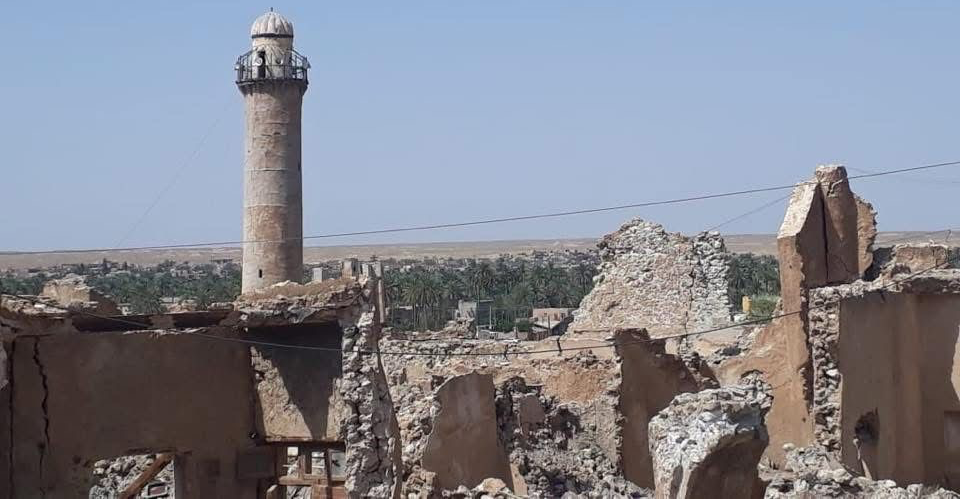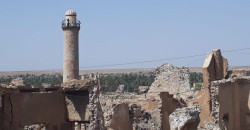Iraq’s Al-Faruq Mosque & Minaret: Living testament to Islamic architecture at risk

Shafaq News/ Iraq’s historic Al-Faruq Mosque and its minaret, among the most remarkable archaeological landmarks in Al-Anbar Province, are at risk of collapse due to “neglect” and environmental factors, prompting authorities to initiate joint efforts for restoration.
"The Al-Faruq Minaret, dating back to the Abbasid era, is not only an archaeological monument but also a historical and cultural symbol that reflects the identity of the Hit City and its civilizational heritage," said Mohammed Al-Fahd, a researcher and specialist in Al-Anbar’s history, to Shafaq News. "It serves as a living testament to the greatness of Islamic architecture in the region."
Al-Fahd emphasized that neglecting the minaret represents "a significant loss to national heritage," stressing the importance of "saving it from collapse, as this is not only about preserving the structure but also safeguarding the memory for future generations and connecting them to their cultural roots."
The researcher also called on the relevant authorities to expedite efforts to save the minaret, noting that "investment in cultural heritage also contributes to enhancing cultural tourism and revitalizing the local economy."
Earlier, a meeting in Hit gathered representatives from the Al-Anbar Antiquities Directorate, the Sunni Endowment, and the district mayor to discuss completing the Al-Faruq Minaret restoration. Attendees stressed the need to accelerate the process, create a comprehensive plan to restore the minaret while preserving its heritage, and secure funding and cooperation to ensure swift project completion.
Al-Faruq Mosque & Minaret
The Al-Faruq Mosque, one of Iraq’s historic landmarks, was built during the early Islamic conquest of Iraq in 17 AH/639 CE, under Caliph Umar ibn al-Khattab, and during the conquest of Hit by Muslim commander Al-Harith ibn Yazid al-Qurashi. Constructed from stone, the mosque sits on an elevated area with steps leading up to it, crowned by a 25-meter-high minaret with a single cylindrical base coated with lime, which originally served as a watchtower before the Islamic conquest of the city.


